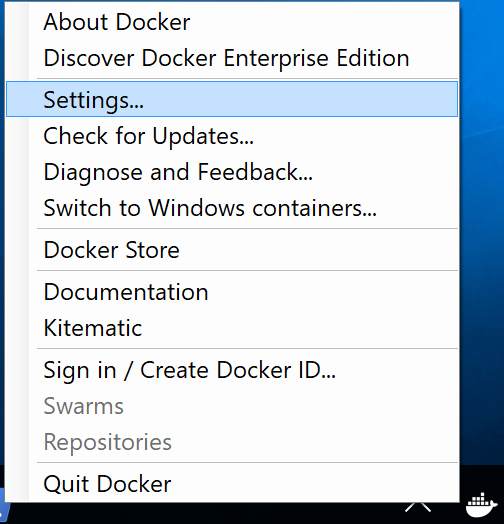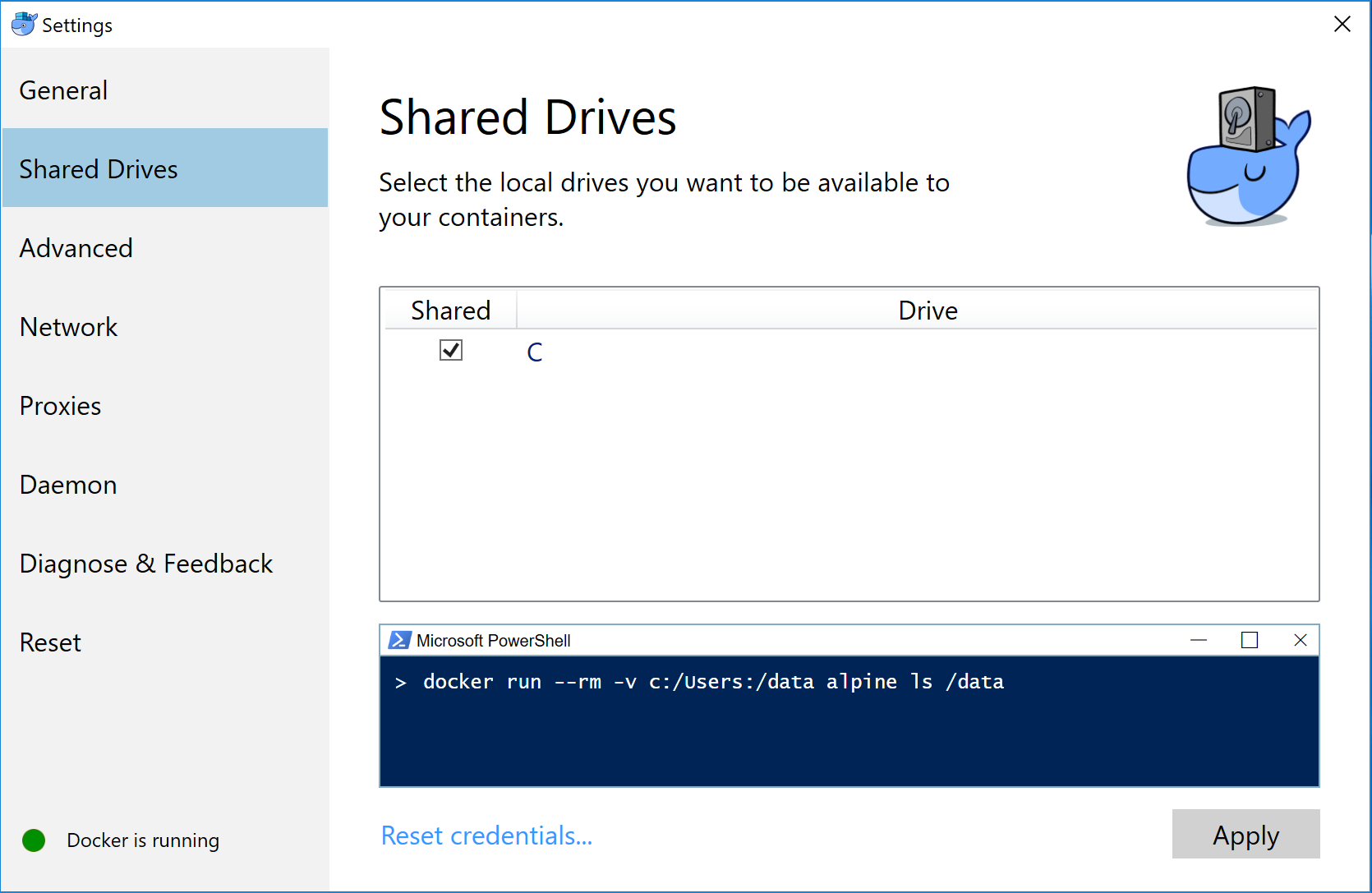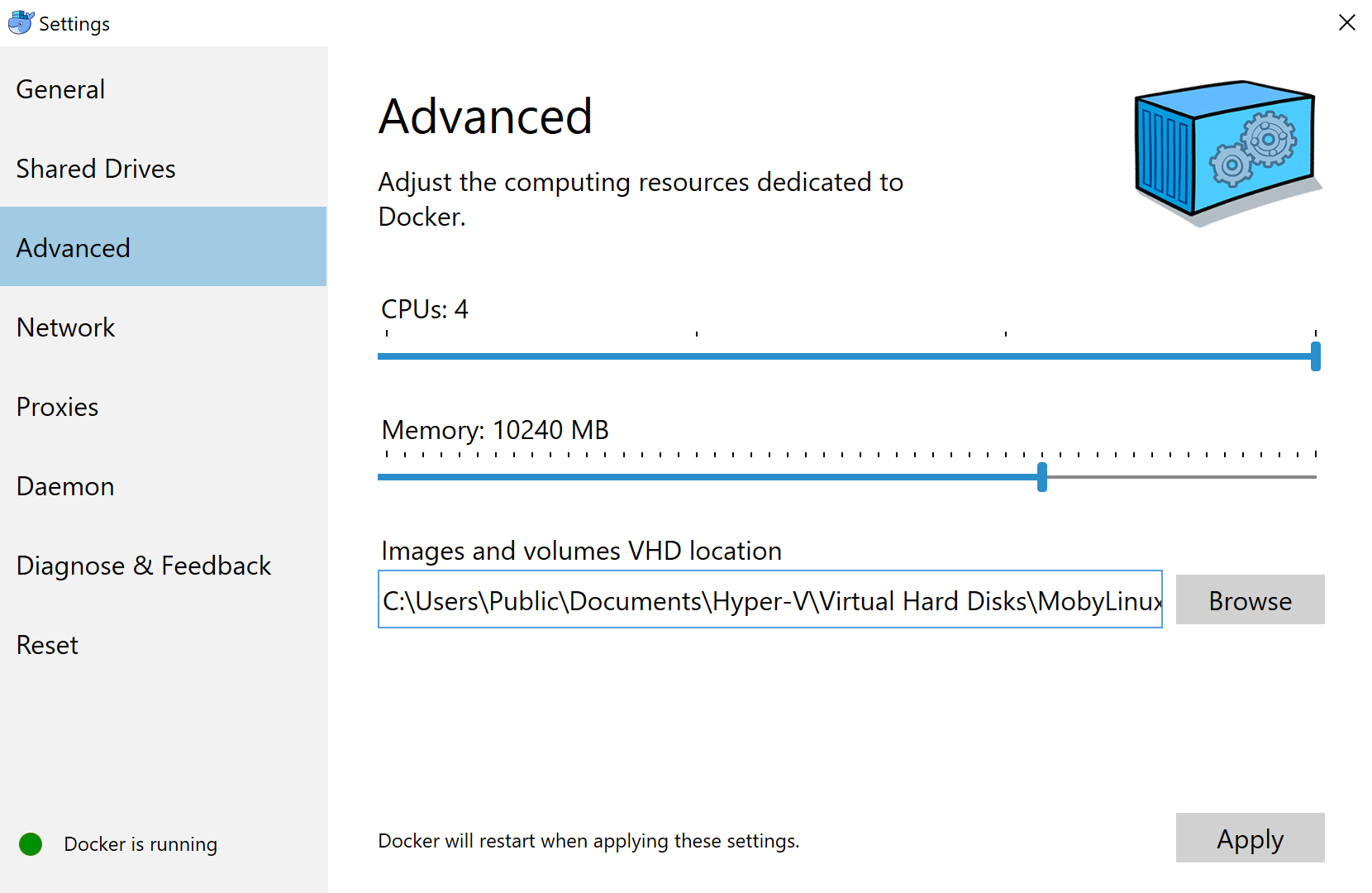Windows 10
This section describes how to install, start, stop, and upgrade Driverless AI on a Windows 10 machine. The installation steps assume that you have a license key for Driverless AI. For information on how to obtain a license key for Driverless AI, visit https://h2o.ai/o/try-driverless-ai/. Once obtained, you will be prompted to paste the license key into the Driverless AI UI when you first log in, or you can save it as a .sig file and place it in the license folder that you will create during the installation process.
Overview of Installation on Windows
To install Driverless AI on Windows, use a Driverless AI Docker image.
Notes:
GPU support is not available on Windows.
Scoring is not available on Windows.
Caution: Installing Driverless AI on Windows 10 is not recommended for serious use.
Environment
Operating System |
GPU Support? |
Min Mem |
Suitable for |
|---|---|---|---|
Windows 10 Pro |
No |
16 GB |
Experimentation |
Windows 10 Enterprise |
No |
16 GB |
Experimentation |
Windows 10 Education |
No |
16 GB |
Experimentation |
Note: Driverless AI cannot be installed on versions of Windows 10 that do not support Hyper-V. Refer to https://docs.microsoft.com/en-us/virtualization/hyper-v-on-windows/reference/hyper-v-requirements for more information.
Docker Image Installation
Notes:
Be aware that there are known issues with Docker for Windows. More information is available here: https://github.com/docker/for-win/issues/188.
Consult with your Windows System Admin if
Your corporate environment does not allow third-part software installs
You are running Windows Defender
You your machine is not running with
Enable-WindowsOptionalFeature -Online -FeatureName Microsoft-Windows-Subsystem-Linux.
Watch the installation video here. Note that some of the images in this video may change between releases, but the installation steps remain the same.
Requirements
Windows 10 Pro / Enterprise / Education
Docker Desktop for Windows 2.2.0.3 (42716)
Note: As of this writing, Driverless AI has only been tested on Docker Desktop for Windows version 2.2.0.3 (42716).
Installation Procedure
Retrieve the Driverless AI Docker image from https://www.h2o.ai/download/.
Download, install, and run Docker for Windows from https://docs.docker.com/docker-for-windows/install/. You can verify that Docker is running by typing
docker versionin a terminal (such as Windows PowerShell). Note that you may have to reboot after installation.Before running Driverless AI, you must:
Enable shared access to the C drive. Driverless AI will not be able to see your local data if this is not set.
Adjust the amount of memory given to Docker to be at least 10 GB. Driverless AI won’t run at all with less than 10 GB of memory.
Optionally adjust the number of CPUs given to Docker.
You can adjust these settings by clicking on the Docker whale in your taskbar (look for hidden tasks, if necessary), then selecting Settings > Shared Drive and Settings > Advanced as shown in the following screenshots. Don’t forget to Apply the changes after setting the desired memory value. (Docker will restart.) Note that if you cannot make changes, stop Docker and then start Docker again by right clicking on the Docker icon on your desktop and selecting Run as Administrator.
Open a PowerShell terminal and set up a directory for the version of Driverless AI on the host machine:
md dai-2.3.0
With Docker running, navigate to the location of your downloaded Driverless AI image. Move the downloaded Driverless AI image to your new directory.
Change directories to the new directory, then load the image using the following command:
cd dai-2.3.0 docker load -i .\dai-docker-ubi8-x86_64-2.3.0.tar.gz
Set up the data, log, license, and tmp directories (within the new directory).
md data md log md license md tmp
Copy data into the /data directory. The data will be visible inside the Docker container at /data.
Run
docker imagesto find the image tag.Start the Driverless AI Docker image. Be sure to replace
path_to_below with the entire path to the location of the folders that you created (for example, “c:/Users/user-name/driverlessai_folder/data”). Note that this is regular Docker, not NVIDIA Docker. GPU support will not be available. Note that from version 1.10 DAI docker image runs with internaltinithat is equivalent to using--initfrom docker, if both are enabled in the launch command, tini prints a (harmless) warning message.
We recommend
--shm-size=2g --cap-add=SYS_NICE --ulimit nofile=131071:131071 --ulimit nproc=16384:16384in docker launch command. But if user plans to build image auto model extensively, then--shm-size=4gis recommended for Driverless AI docker command.docker run --pid=host --rm --shm-size=2g --cap-add=SYS_NICE --ulimit nofile=131071:131071 --ulimit nproc=16384:16384 -p 12345:12345 -v c:/path_to_data:/data -v c:/path_to_log:/log -v c:/path_to_license:/license -v c:/path_to_tmp:/tmp h2oai/dai-ubi8-x86_64:2.3.0-cuda11.8.0.xx
Connect to Driverless AI with your browser at http://localhost:12345.
Stopping the Docker Image
To stop the Driverless AI Docker image, type Ctrl + C in the Terminal (Mac OS X) or PowerShell (Windows 10) window that is running the Driverless AI Docker image.
Upgrading the Docker Image
This section provides instructions for upgrading Driverless AI versions that were installed in a Docker container. These steps ensure that existing experiments are saved.
WARNING: Experiments, MLIs, and MOJOs reside in the Driverless AI tmp directory and are not automatically upgraded when Driverless AI is upgraded.
Build MLI models before upgrading.
Build MOJO pipelines before upgrading.
Stop Driverless AI and make a backup of your Driverless AI tmp directory before upgrading.
If you did not build MLI on a model before upgrading Driverless AI, then you will not be able to view MLI on that model after upgrading. Before upgrading, be sure to run MLI jobs on models that you want to continue to interpret in future releases. If that MLI job appears in the list of Interpreted Models in your current version, then it will be retained after upgrading.
If you did not build a MOJO pipeline on a model before upgrading Driverless AI, then you will not be able to build a MOJO pipeline on that model after upgrading. Before upgrading, be sure to build MOJO pipelines on all desired models and then back up your Driverless AI tmp directory.
Note: Stop Driverless AI if it is still running.
Requirements
We recommend to have NVIDIA driver >= 471.68 installed (GPU only) in your host environment for a seamless experience on all architectures, including Ampere. Driverless AI ships with CUDA 11.8.0 for GPUs, but the driver must exist in the host environment.
Go to NVIDIA download driver to get the latest NVIDIA Tesla A/T/V/P/K series drivers. For reference on CUDA Toolkit and Minimum Required Driver Versions and CUDA Toolkit and Corresponding Driver Versions, see here .
备注
If you are using K80 GPUs, the minimum required NVIDIA driver version is 450.80.02.
Upgrade Steps
SSH into the IP address of the machine that is running Driverless AI.
Set up a directory for the version of Driverless AI on the host machine:
# Set up directory with the version name mkdir dai-2.3.0 # cd into the new directory cd dai-2.3.0
Retrieve the Driverless AI package from https://www.h2o.ai/download/ and add it to the new directory.
Load the Driverless AI Docker image inside the new directory:
# Load the Driverless AI docker image docker load < dai-docker-ubi8-x86_64-2.3.0.tar.gz
Copy the data, log, license, and tmp directories from the previous Driverless AI directory to the new Driverless AI directory:
# Copy the data, log, license, and tmp directories on the host machine cp -a dai_rel_1.4.2/data dai-2.3.0/data cp -a dai_rel_1.4.2/log dai-2.3.0/log cp -a dai_rel_1.4.2/license dai-2.3.0/license cp -a dai_rel_1.4.2/tmp dai-2.3.0/tmpAt this point, your experiments from the previous versions will be visible inside the Docker container.
Use
docker imagesto find the new image tag.Start the Driverless AI Docker image.
Connect to Driverless AI with your browser at http://Your-Driverless-AI-Host-Machine:12345.
Installing Driverless AI with Podman on Windows
You can install and run Driverless AI on Windows using Podman as an alternative to Docker Desktop.
备注
Podman does not require Docker Desktop. Podman is a daemonless container engine that is compatible with Docker commands. For more information, see the Podman documentation.
Requirements
Windows 10 Pro / Enterprise / Education
Podman for Windows
备注
Ensure that Podman is installed and configured to run containers as rootful. Driverless AI requires at least 10 GB of memory.
Installation Procedure
Retrieve the Driverless AI Docker image from the H2O.ai releases page.
Download and install Podman for Windows from the Podman releases page.
Verify that Podman is installed by running the following command in a terminal (such as Windows PowerShell):
podman --versionInitialize the Podman machine with sufficient resources. Allocate at least 10 GB of memory:
podman machine init --cpus 4 --memory 10240 podman machine set --rootful podman machine start
Create a directory for Driverless AI and subdirectories for data, logs, license, and temporary files:
md dai md dai\data md dai\log md dai\license md dai\tmp
Move the downloaded Driverless AI image to the dai directory.
Change to the new directory and load the image:
cd dai podman load -i .\dai-docker-ubi8-x86_64-1.11.1.tar.gz
List available images to find the correct image tag:
podman imagesStart the Driverless AI Podman container. Replace
<tag>with the image tag retrieved in step 8:podman run -e TINI_SUBREAPER=1 --pid=host --rm --shm-size=2g \ --cap-add=SYS_NICE --ulimit nofile=131071:131071 --ulimit nproc=16384:16384 \ -p 12345:12345 \ -v ./tmp:/tmp \ -v ./data:/data \ -v ./license:/license \ -v ./log:/log \ h2oai/dai-ubi8-x86_64:<tag>
备注
Consider the following when running Driverless AI with Podman:
The volume paths are relative to the dai directory created in step 5.
If you plan to build image auto models extensively, set
--shm-size=4g.GPU support is not available when running Driverless AI on Windows with Podman.
Connect to Driverless AI by opening a browser and navigating to http://localhost:12345.
If the installation was successful, you should now see the Driverless AI login page in your browser.


